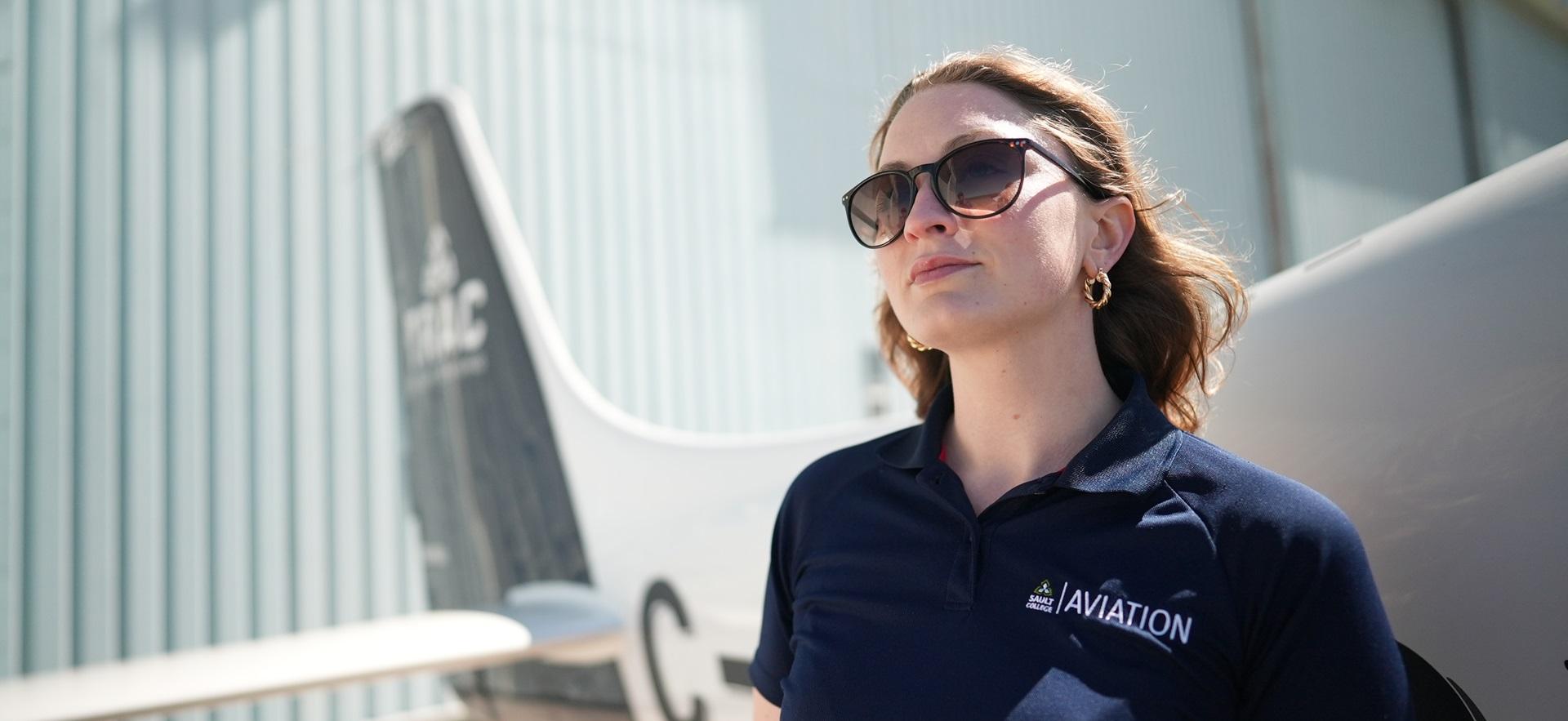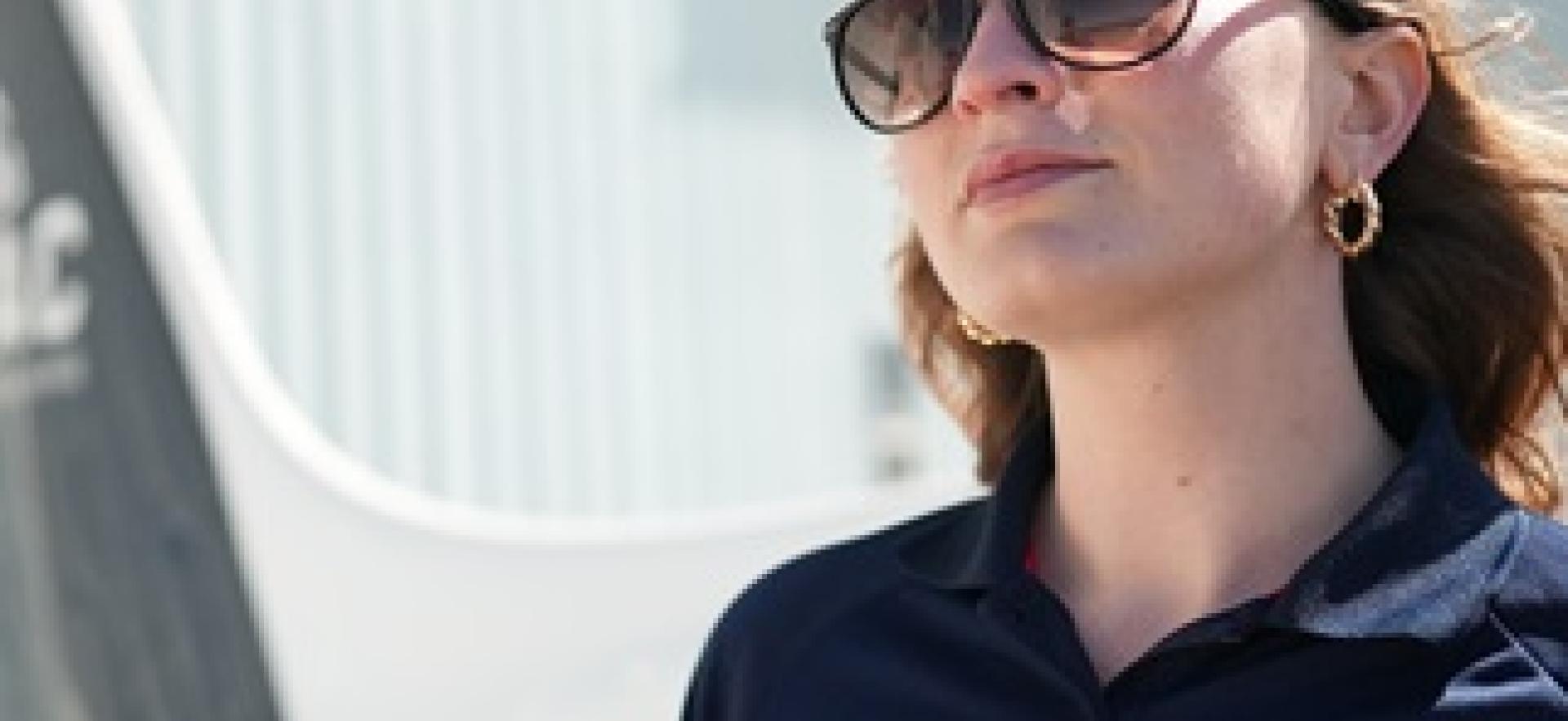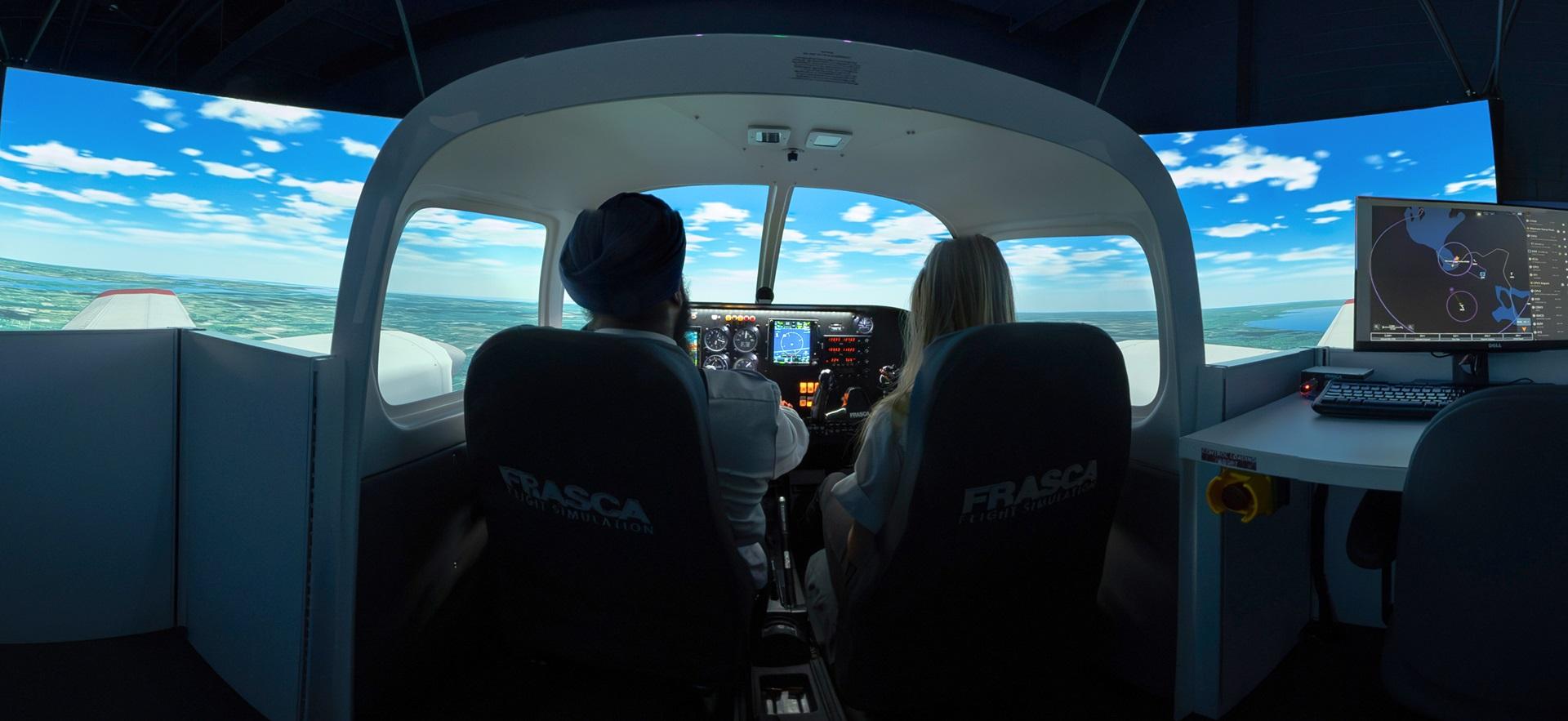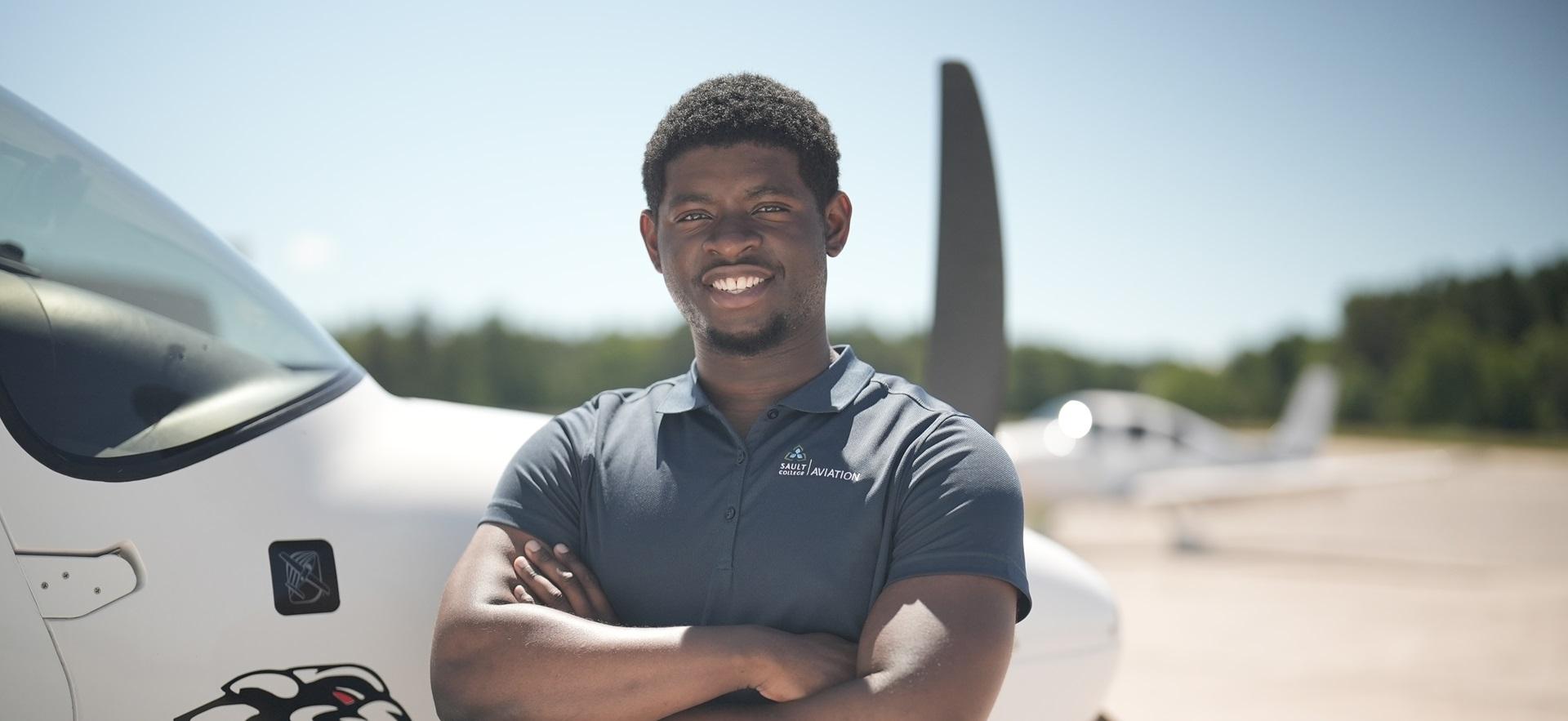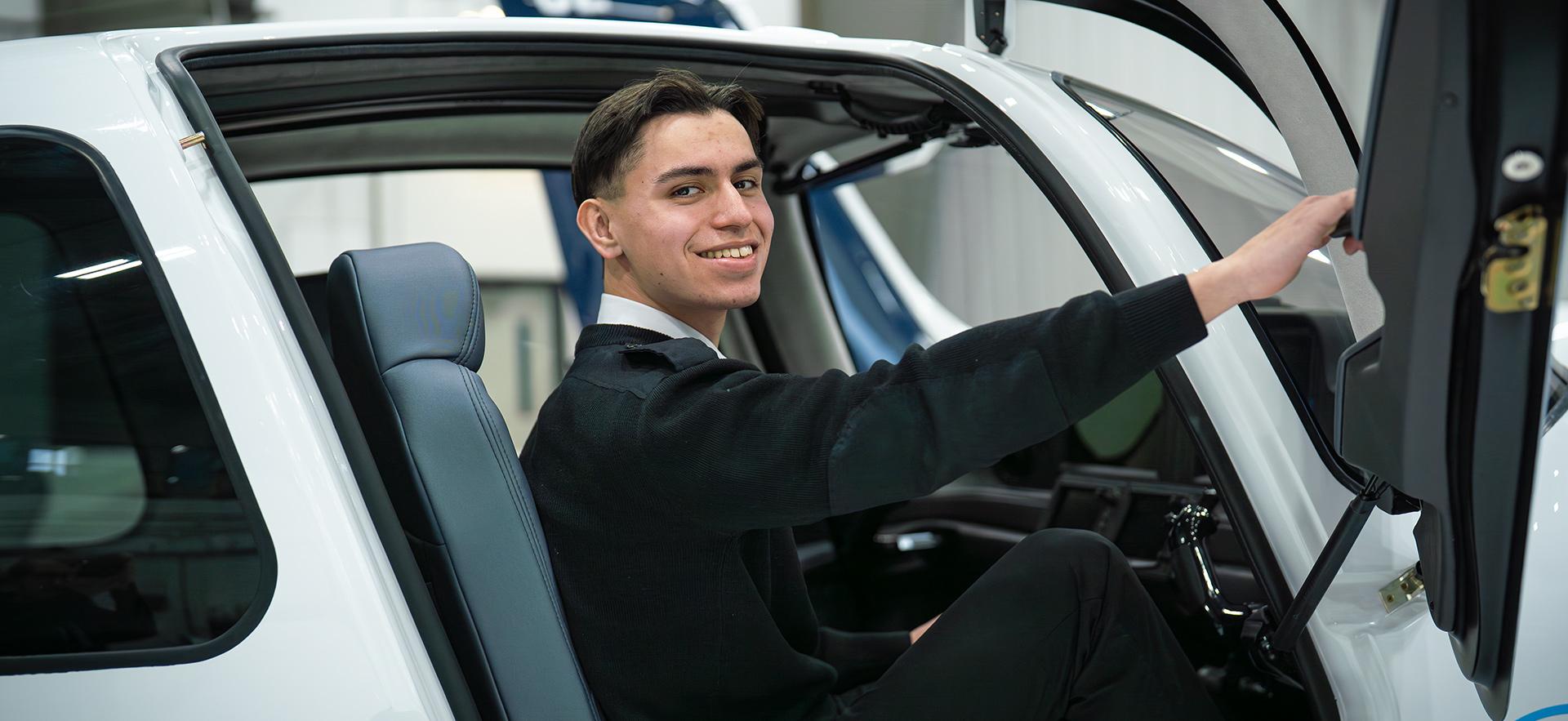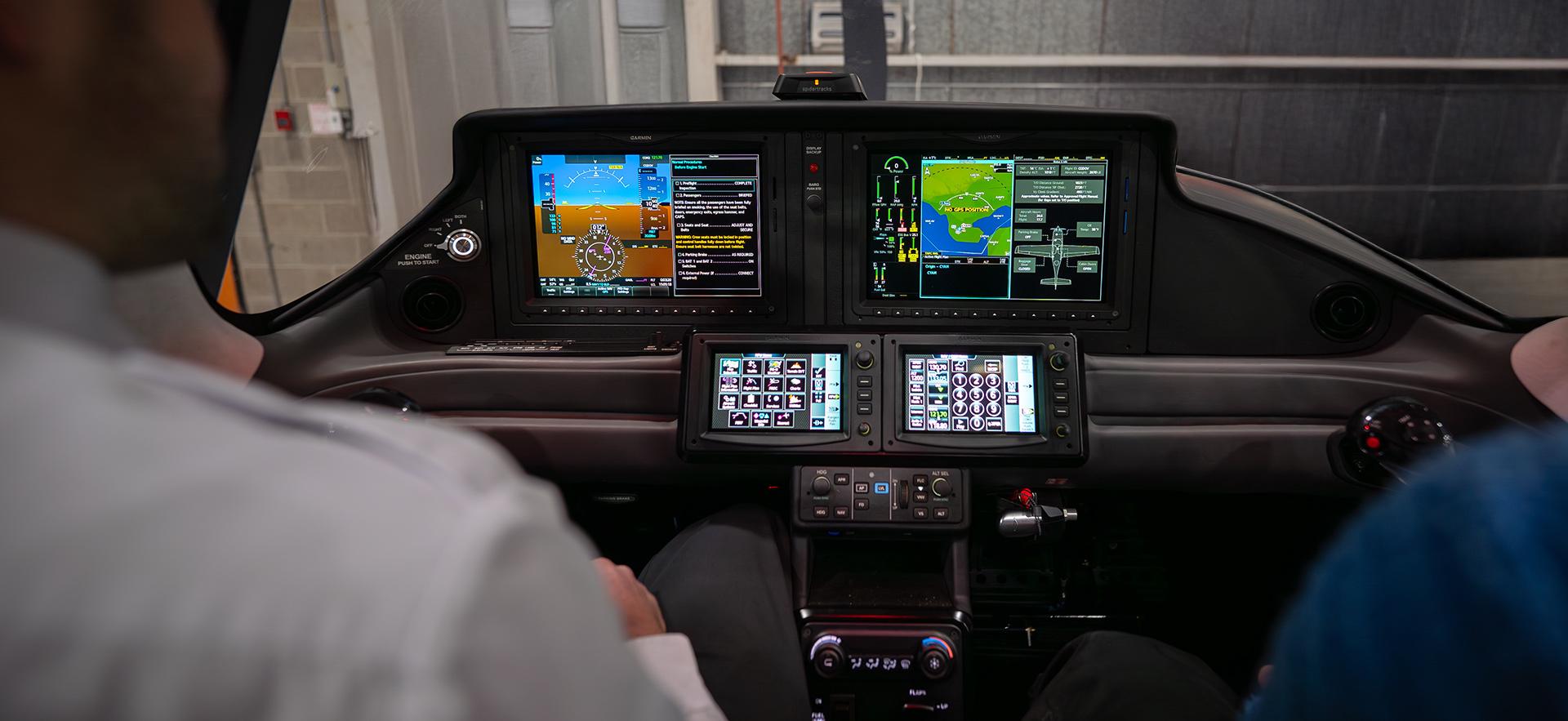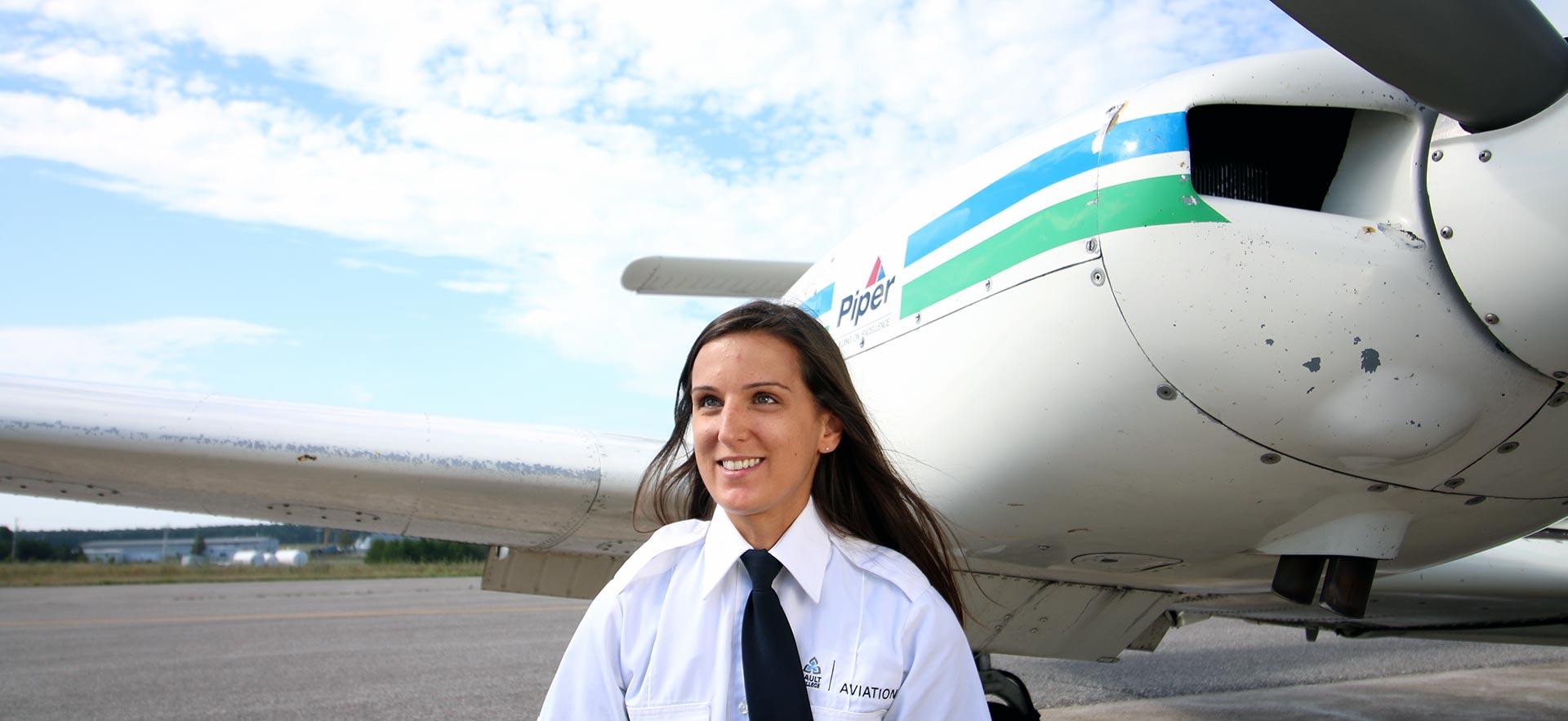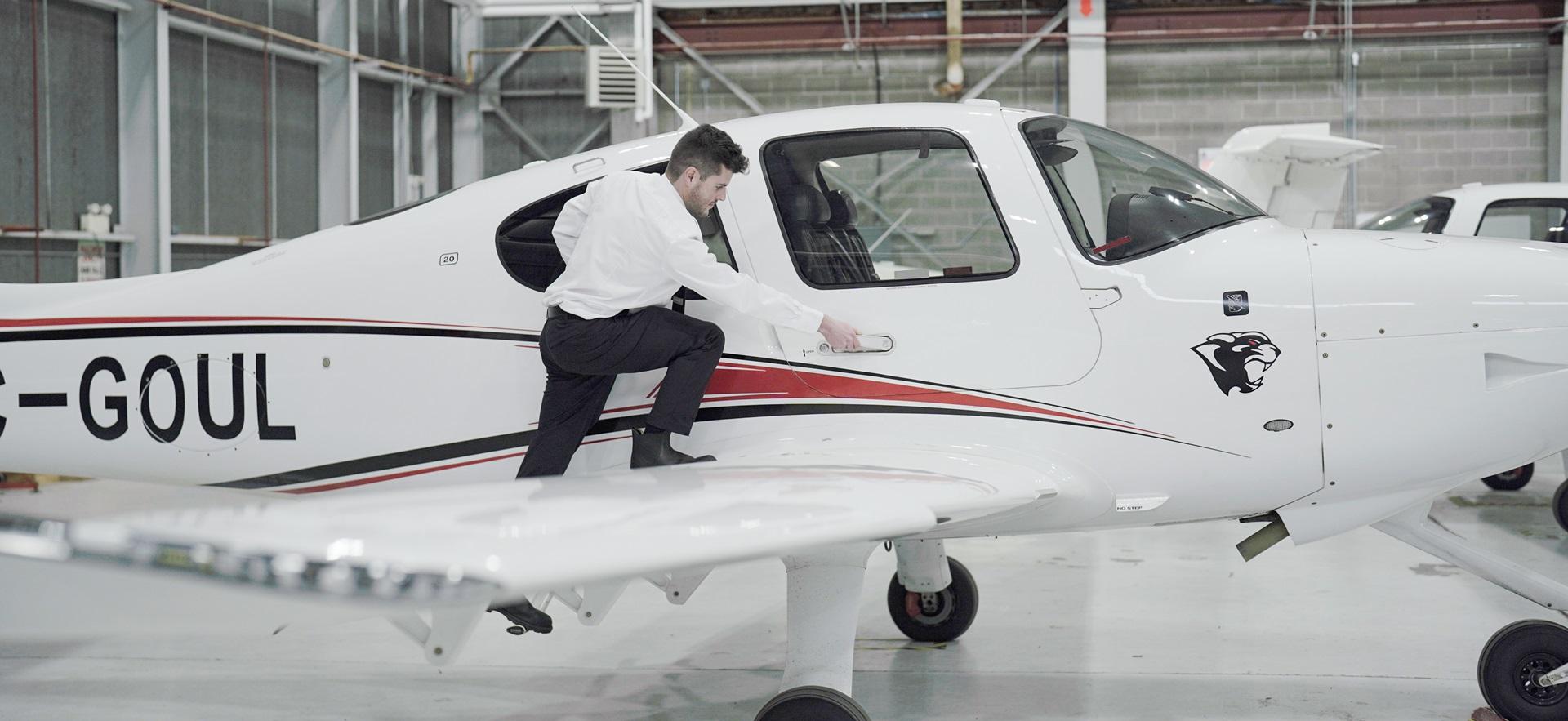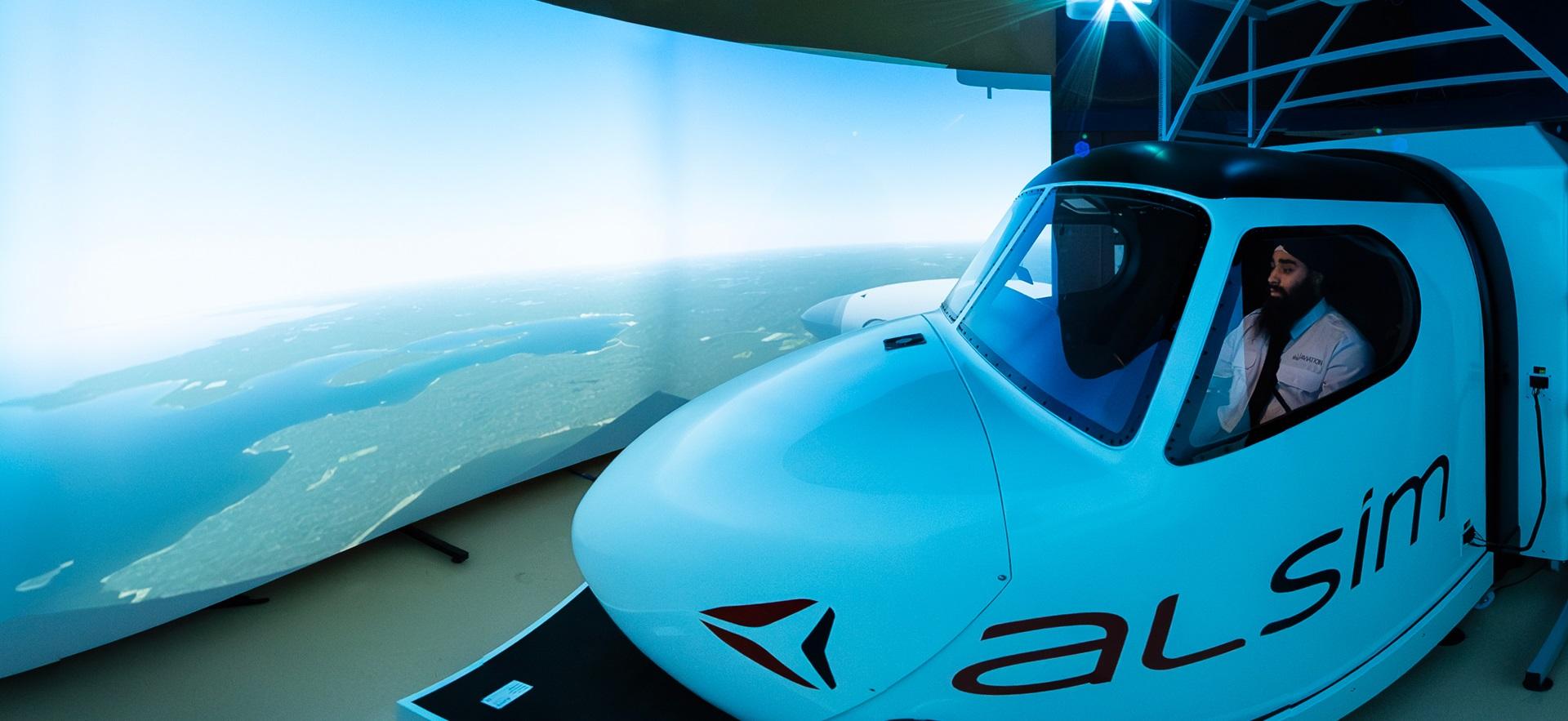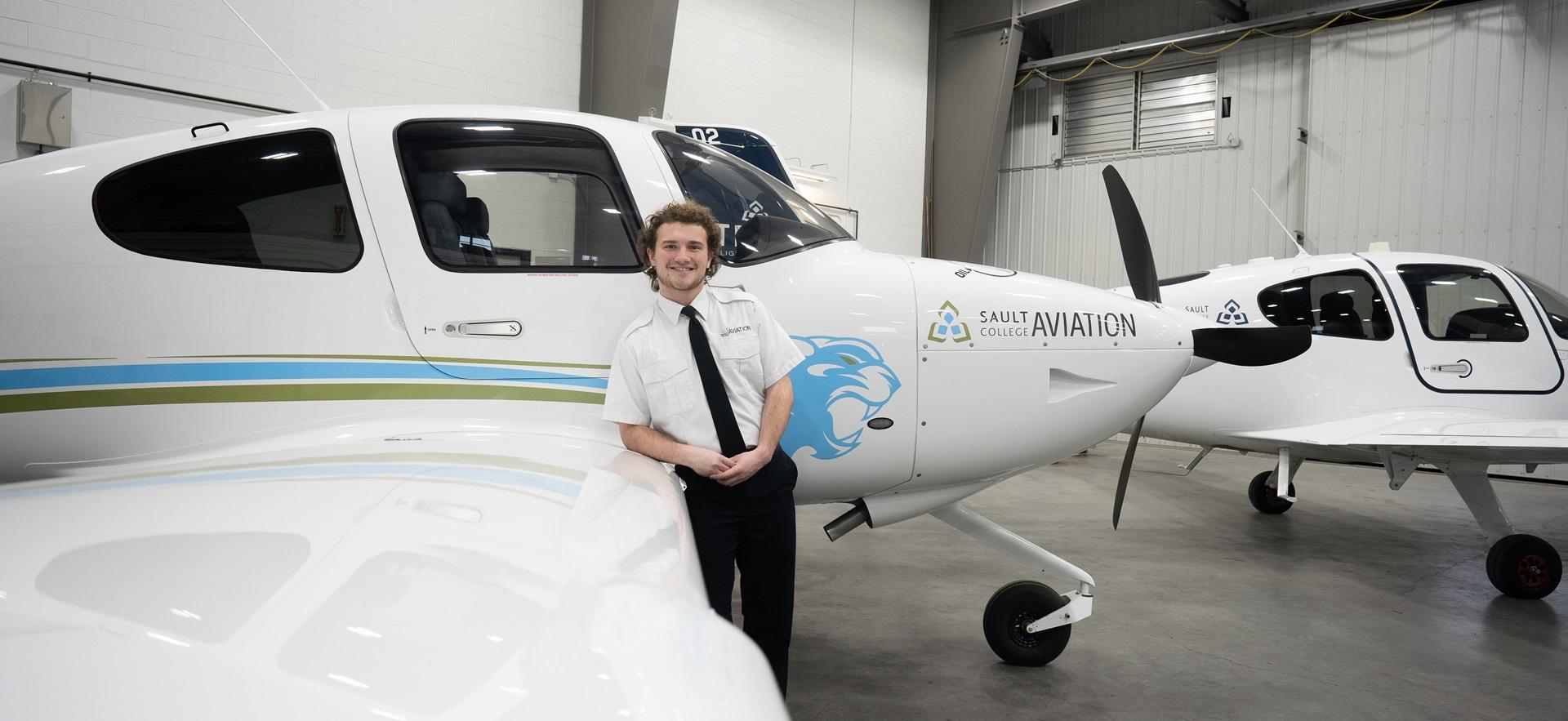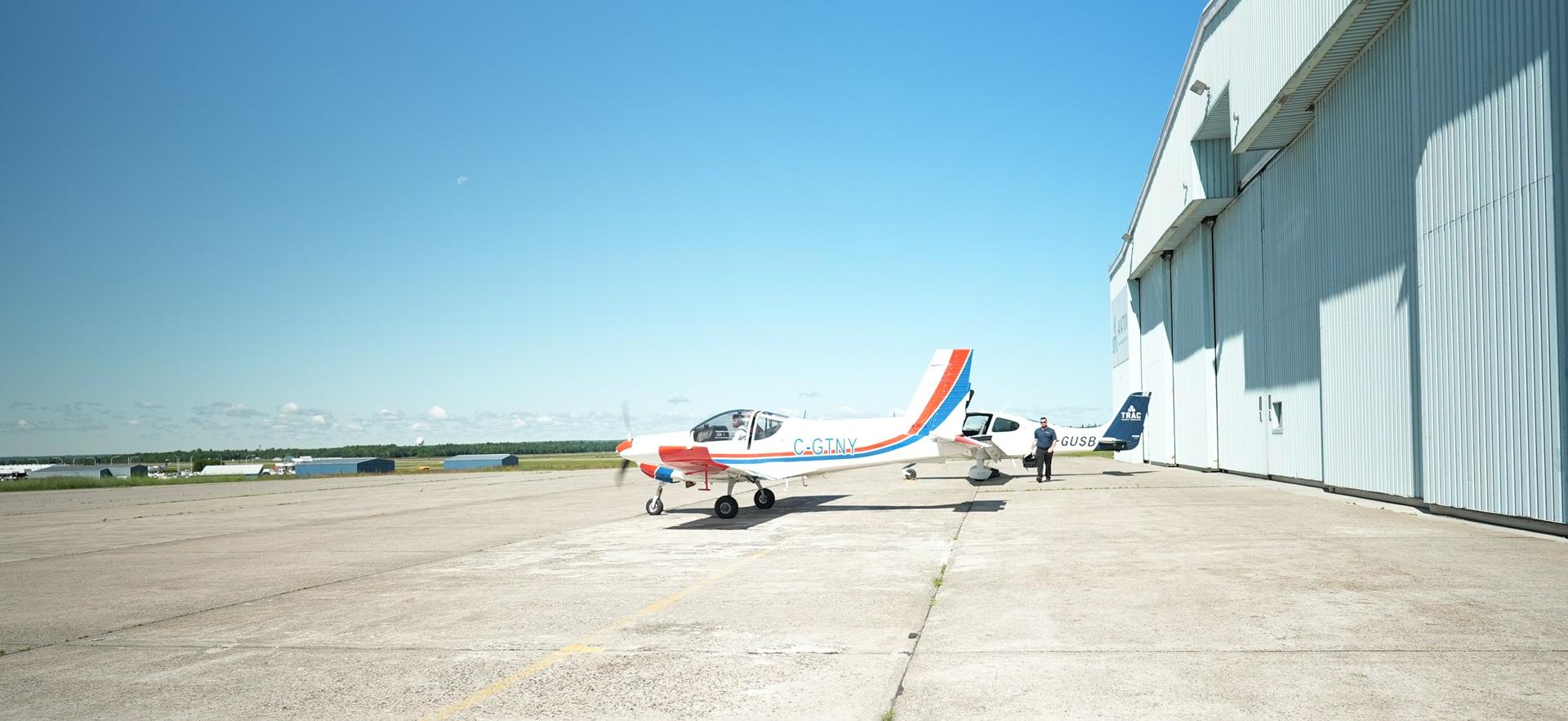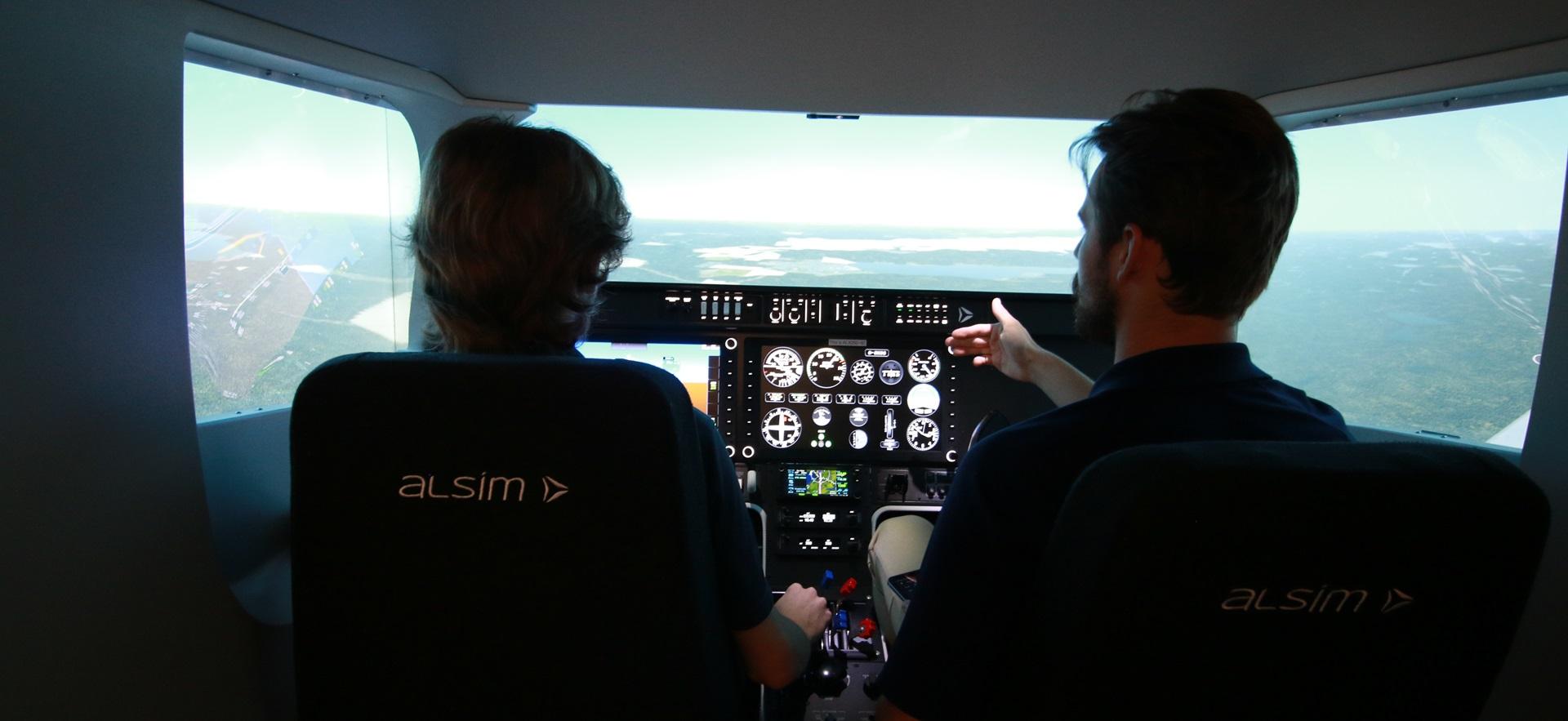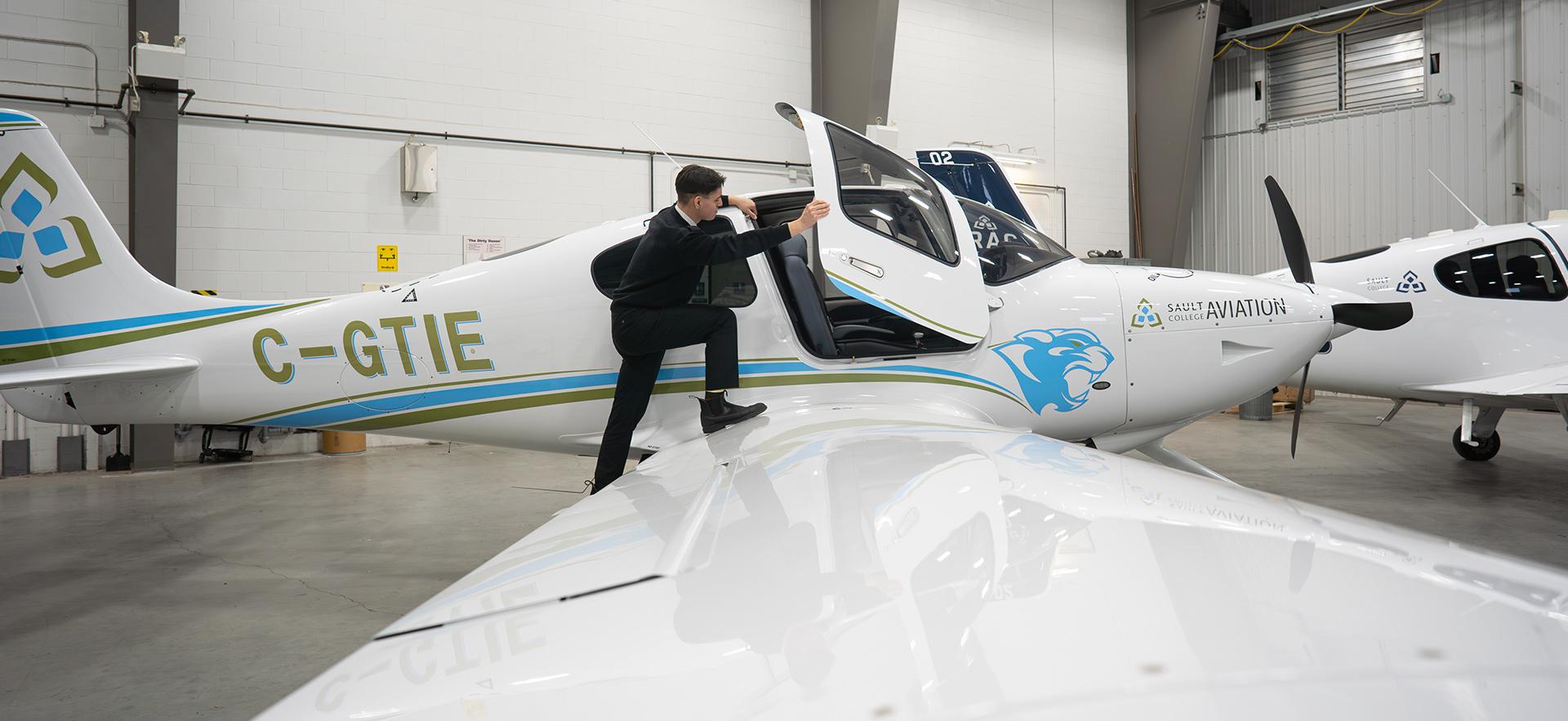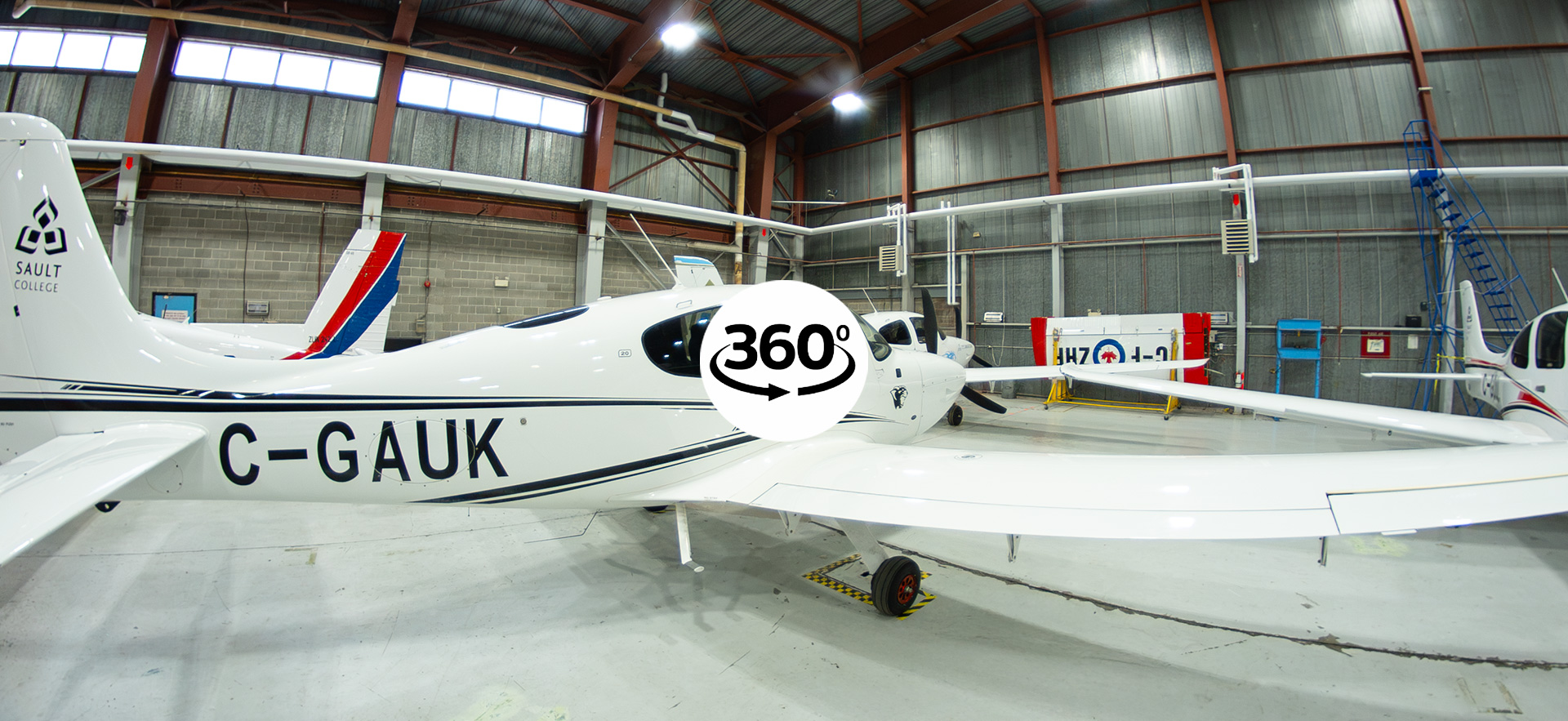Overview
Take off into an exciting career in aviation with the two-year Aviation Commercial Pilot Operations diploma program at Sault College.
Develop an academic foundation and gain flight experience with advanced aircraft and state-of-the-art simulators to earn your integrated Commercial Pilot License (CPL(A)) and begin your journey into flying, instructing, or exploring the world of commercial aviation. Integrated flight training programs are accelerated to provide a more cost-effective means of flight training.
Experienced Sault College instructors deliver your flight training from our own hangar located at CYAM—a controlled airport with a control tower, giving you access to fly in both Canadian and U.S. airspace.
Get immersed in academics and flight training in the fall and winter terms of both years—but in the summer semester between Year 1 and Year 2, it’s all about flight training! Build your flight hours and get even closer to your license requirements.
You’ll be registered in the integrated ATP(A) Airline Pilot Program, where flight training costs are included with tuition—no guesswork, no extra steps. Just a seamless path to the hands-on training that will prepare you for a successful commercial pilot career.
You may have the opportunity to complete one additional year by transferring into a three-year integrated advanced diploma and qualify for the Frozen ATPL program.
Sault College’s proximity to the U.S. border also offers a unique option to live in or near our sister city Sault Sainte Marie, Michigan, and commute to campus. If you plan to take your career back to the U.S. after graduation, FAA license conversion support is available to ease the transition.
Grab the controls—your career in aviation is ready to launch.
This program is only for international students.
Let's Connect
Are you an international student interested in this program? Our Aviation team is ready to get in touch to answer your questions.
This program is open to international students only.
Not an international student? Explore the Aviation Technology - Flight program.
Courses
Requirements & Program Information
Ontario Secondary School (OSSD) or equivalent, mature student status. Plus:
- Grade 12 English, College Preparation (ENG4C) or substitute Grade 12 English, University Preparation (ENG4U), or equivalent.
- Grade 12 Mathematics for College Technology (MCT4C) or substitute Advanced Functions, University Preparation (MHF4U) or Calculus and Vectors, University Preparation (MCV4U), or equivalent.
- Grade 12 Physics, College Preparation (SPH4C) or substitute Grade 12 Physics, University Preparation (SPH4U), or Grade 11 Physics, University Preparation (SPH3U), or equivalent.
- If your education was completed in a language other than English, your application must include copies of the original documents as well as a notarized translation.
- Transport Canada Category 1 Medical Certificate (Find a CAME via - Canada.ca) or a medical valid in your home country for a Commercial Pilot License (equivalent or better). This must be provided to the Registrar’s Office by August 1 of the entry year. Students accepted into the program based on an international aviation medical will be required to apply for a Canadian Category 1 medical during the first semester; a valid Transport Canada Category 1 medical will be required for semester 3 enrollment. This medical certificate must remain active for the duration of studies.
- Language Proficiency Requirements: Applicants who have not met the English proficiency study requirements must provide proof of English language proficiency. Acceptable tests of English language proficiency including minimum test scores are: IELTS 7.0 with no bands less than 6.5, PTE 67 with no bands less than 65, Cambridge English Exam C1 or C2 with a score of 190 and no single test score less than 180 or CLB Level 9 for all areas.
Have you been educated outside of Canada and/or have your studies been completed in a language other than English? Please follow this link for additional admission requirements and considerations Admission Requirements for students educated outside of Canada | Sault College
Medical requirement
Final acceptance into the program is contingent upon satisfactory medical records filed with the College. This includes a photocopy of a Transport Canada Category 1 medical certificate and a photocopy of a Canadian birth certificate or a Citizenship document showing date of birth. The Category 1 medical may be obtained from any Canadian Aviation Medical Examiner. A list of doctors is available on Transport Canada`s website. Note: Upon arrival to the College, the originals of these documents must be produced in order to facilitate licencing. For students who currently hold a Canadian Pilot Licence or Permit, a copy of the Licence/Permit must be submitted. Students must renew their Category 1 medical certificate prior to writing the Transport Canada Commercial Written exam in Semester 5. Due to the Canadian Air Regulations (CARs) and the College`s aircraft manufacturer`s specifications, all pilots are required to adhere to weight and balance restrictions. These weight restrictions are accessible in the manufacturer`s pilot operating handbook, copies of which are readily accessible at both the College and College airport hangar locations.
Proof of English Language Proficiency - With English being the international language of aviation, all training in the Sault College aviation program is conducted in English. Transport Canada, the industry regulator, requires aviation license candidates to demonstrate an expert level proficiency in English.
Canadian citizens who have graduated from a Canadian English or French speaking high school and, those who can provide evidence that they have completed their studies in either English or French will qualify for the informal demonstration in the language indicated on their high school diploma; provided the Chief Flight Instructor (CFI) of a Flight Training Unit (FTU) is satisfied that the person can demonstrate the competencies of Expert Level 6 as listed in standard 421.06(4) of the CARs. If there is any uncertainty as to whether the student is to the expert level 6 standard, the CFI will request a formal aviation language assessment. It is important to note that this assessment for Sault College students, if required, will be completed in English only.
If the applicant or student is uncertain that they are at an expert level, they can request a meeting with the CFI to discuss.
Sault College reserves the right to have the student conduct a formal aviation language proficiency demonstration.
Students must have a valid Canadian Medical Certificate to participate in flight training. Students are required to have the Transport Canada Category 1 Medical Certificate and submit it to the College by August 1st. If an international student holds an equivalent from their home country, we may accept that for initial admission. Please contact the college to determine admissibility at registrar@saultcollege.ca.
Dress code
Professional Pilots are well groomed and properly dressed. Since students at Sault College are working towards becoming Professional Pilots, they should also be well groomed and properly dressed. Dress code will be observed at the college up to 1700 hrs during week days and at all times at the Hangar. Activities, such as tests after 1700 hrs or weekend non-flying activities, will be at the discretion of the professor. The following dress code guidelines will be observed:
Hair
- Facial hair other than for religious reasons shall be neatly trimmed and maintained (to reflect professionalism).
- Hair is to be clean and groomed at all times.
- While flying, hair shall be neatly pulled back so as not to obstruct vision including peripheral vision.
- Hairstyle must be such that it does not draw undue attention. Radical hairstyles or colouring are not allowed.
Dress Attire Mandatory
- The Colleges aviation uniform (available via the colleges bookstore) shall be worn. It consists of a white pilot shirt embroidered with the Sault College Aviation logo, dark blue dress pants and a matching blue tie. During winter operations, a matching dark blue sweater also embroidered with the college logo can be worn overtop the pilot shirt and tie. The shirt must be tucked in at all times. For summer flight operations see section 6.1.3 Summer Operations. Casual or dress socks shall be worn. No athletic socks. No running shoes are allowed. Leather shoes are preferable for classroom work and hiking boots are a good choice when flying. During the winter months, proper boots either need to be worn or be on board the aircraft. High heels are a hazard to the operation of the rudder pedals and not allowed in the aircraft. Wrist jewellery that can catch on switches or controls not allowed. Ball caps are only to be worn in the aircraft for the purpose of shading eyes from the sun. They shall be worn straight and are not to be worn indoors at the College or at the Hangar.
Other
- Personal hygiene shall be a priority. Students will spend a large amount of time in close proximity to other students and their instructors. Excessive use of cologne, perfume, body spray, and aftershaves is as offensive or distracting as poor hygiene. Make up is to be conservative. Fingernails shall not be unreasonably long. Earrings shall be limited to one per ear and must be small enough to not interfere with an aviation headset. (Studs vs. hoops would be preferable.)
Winter Operations
Pilots must dress for survival for every flight, even local flights, winter and summer. If an aircraft was to make a forced landing in winter, the pilot and passengers must be prepared to, at the very minimum, spend the night in the woods. The chances of survival, even in the fall and spring, will be greatly diminished if proper clothing is not worn. For winter flying, the following is a minimum list:
- A winter parka, or at the very minimum a good quality ski jacket with at least one additional layer of a wool or fleece sweater. The heavy coat is not usually worn while flying, but must be present in the aircraft. Winter underwear or in its absence, ski pants on board the aircraft. Proper winter boots either worn or on board the aircraft. A proper winter hat such as a wool cap, and good quality gloves or mittens.
Summer Operations
- At the discretion of the duty pilot, ties may be removed during very hot days. College issued aviation polo shirts may be worn in lieu of shirt and tie during the summer semester. (May 1st until September 1st).
This Dress and appearance code complies with the Human Rights Standards of Canada.
Take A Virtual Tour
Explore the interactive virtual tour of Aviation program spaces, like the Hangar and flight simulators.
Fees & Costs
| Domestic | International | ||
|---|---|---|---|
| Tuition | Ancillary | Tuition | Ancillary |
| N/A | N/A | $65,896.00 | $2,823.50 |
These fees are for the 2025-2026 academic year (year 1 of study), and are subject to change. Please visit your Student Portal to view your Schedule of Fees.
This program runs five consecutive semesters in total, with no scheduled semester break:
- Year 1 - Three consecutive semesters of study
- Fall Term: Semester 1; Winter Term: Semester 2; Summer Term: Semester 3
- Year 2 - Students continue their program of study, with no semester break, returning for their final semesters
- Fall Term: Semester 4; Winter Term: Semester 5
Tuition and Ancillary Fees*:
- Year 1 - Tuition $65,896, Ancillary $2,823.50
- Total Year 1 Fees (Tuition & Ancillary) = $68,719.50
- Year 2 - Tuition $51,599, Ancillary $2,350.00
- Total Year 2 Fees (Tuition & Ancillary) = $53,949.00
*Year 1 fees are for three semesters of study in Program 4163 beginning in the Fall 2025 for the 2025-2026 academic year and are subject to change.
Year 2 fees are for two semesters of study in Program 4163 beginning in the Fall 2026 for the 2026-2027 academic year and are estimated fees, subject to change. Fees will be adjusted in February 2026.
Tuition and Ancillary amounts are listed in Canadian Dollars.
Contact
Program College Contact: Paul Bursche, paul.bursche@saultcollege.ca
